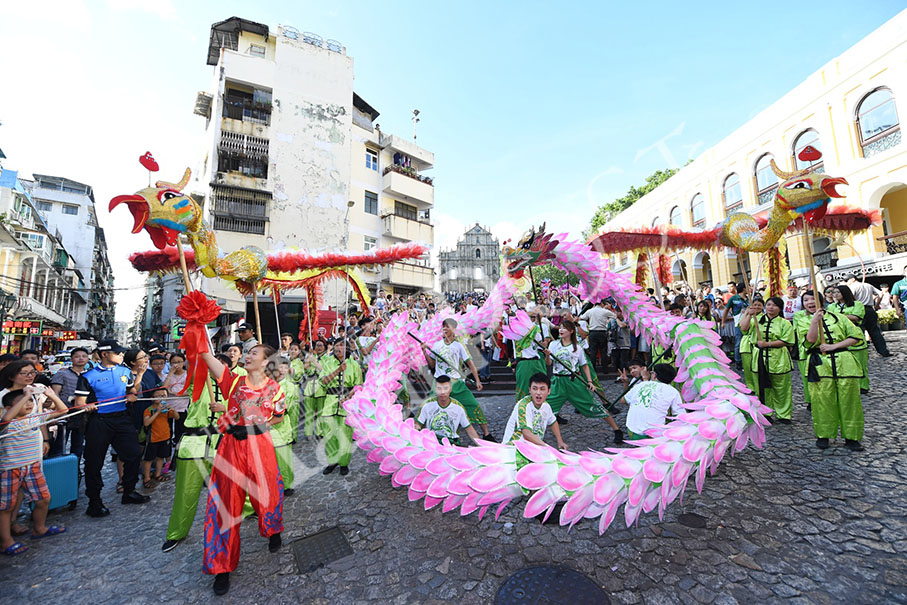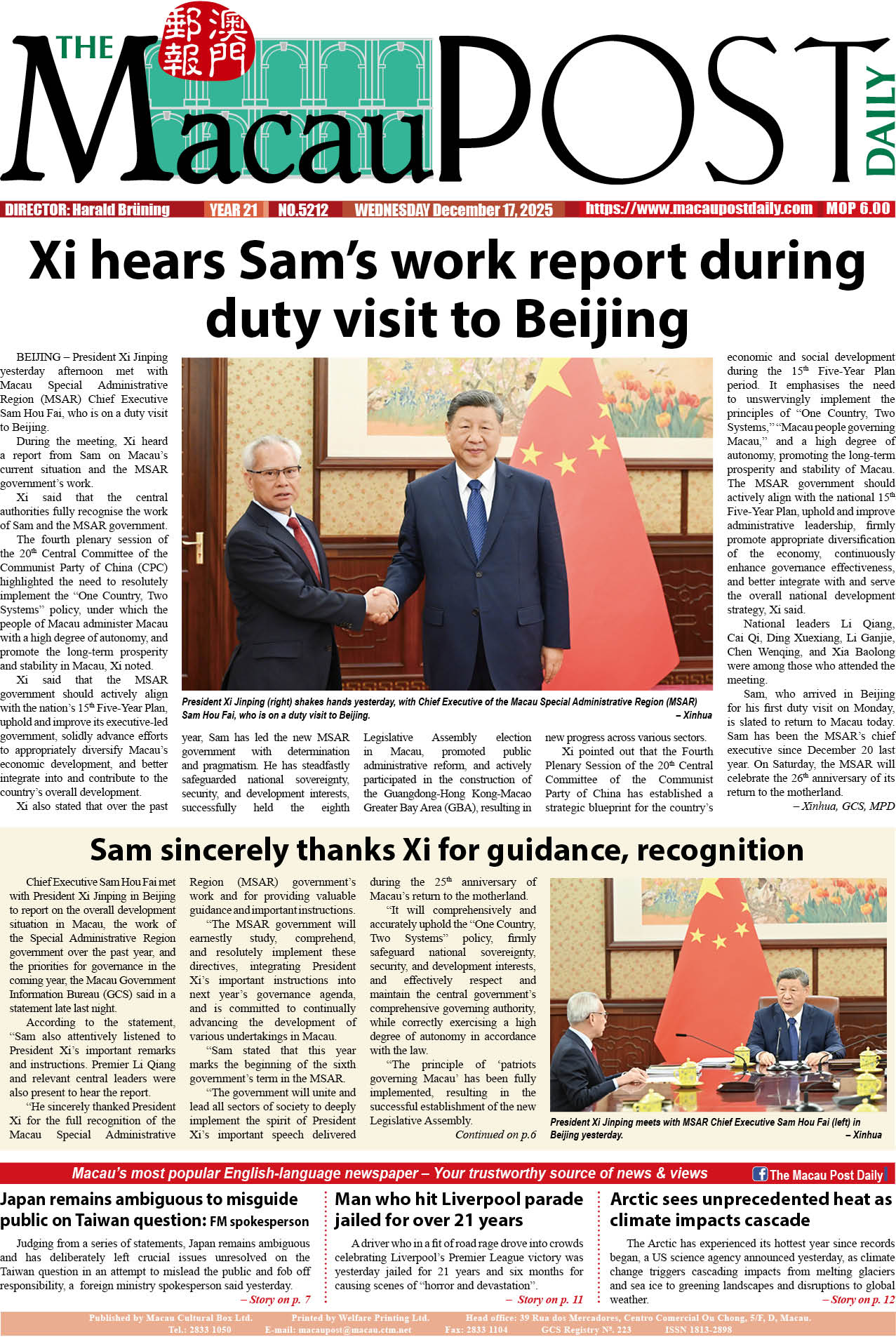Secretary for Administration and Justice André Cheong Weng Chon, who is also the spokesman for the government’s top advisory Executive Council, made the announcement during a press conference at Government Headquarters late last month.
The Macau Special Administrative Region’s (MSAR) urban master plan for 2020 to 2040 will be promulgated as an administrative regulation (by-law), which does not require the legislature’s approval.
The urban master plan had still not been published in the Official Gazette last week.
According to the Urban Planning Law, which came into force in 2014, the government is required to draft an urban master plan. Cheong’s announcement means that Macau’s official urban master plan has now finally got off the ground years after the law had taken effect.
Cheong said that the government has drafted the urban master plan after studying opinions and suggestions from the Urban Planning Council (CPU), a government-appointed consultative body tasked with advising the government on its urban planning policies and from residents during a two-month public consultation that was launched in September 2020.
The government has drafted the urban master plan based on the aim of turning Macau into a world tourism and leisure centre and a “beautiful home” as its main strategy for urban development, Cheong said.
The urban master plan divides Macau into 18 “subareas for planning”, which are classified as urban areas and non-urban areas.
According to Cheong, non-urban areas refer to hills, water bodies (such as reservoirs and lakes) and wetlands where any urban development is prohibited, accounting for 18 percent of Macau’s total land area (non-coastal-water area).
The urban master plan designates a raft of new commercial areas, such as around the Barrier Gate border checkpoint, the site where the now-defunct Lotus Flower checkpoint in Cotai is located and its surrounding areas, the original “Ocean World” plot in Taipa, and an area south of the Macau checkpoint zone of the Hong Kong-Zhuhai-Macau Bridge.
In its urban master plan, the government also plans to gradually convert the industrial buildings along Avenida de Venceslau de Morais (慕拉士大馬路) into office buildings.
The government also plans to transfer the industrial facilities scattered across the city to four major existing industrial zones, namely the Zhuhai Macau Cross-border Industrial Zone in Ilha Verde, the northern section of Pac On in Taipa, Coloane’s Concórdia Industrial Park, and Ká-Hó in Coloane.
During the press conference on January 28, Lands, Public Works and Transport Bureau (DSSOPT) officials pointed out that the future Light Rail Transit (LRT) East Line will have a station near the Barrier Gate border checkpoint, adding that commercial facilities will be set up in and around the future LRT station near the Barrier Gate checkpoint. The officials also said that the headquarters of the police tactical unit, which is currently located next to the Barrier Gate checkpoint, will be relocated to somewhere else in the future so as to make way for commercial facilities there.
According to the DSSOPT officials, the urban master plan means that if condominium unit owners plan to redevelop their industrial buildings along Avenida de Venceslau de Morais in the future, the respective plots of land will no longer be allowed to be used for industrial purposes.
Cheong also said during the press conference that an assessment by the government has concluded that after enlarging the Concórdia Industrial Park in Coloane, the four major existing industrial zones would be sufficient to accommodate all the existing industrial facilities scattered across the city such as those along Avenida de Venceslau de Morais and those along Avenida do Almirante Lacerda (罅些喇提督大馬路).
This photo taken from Guia Lighthouse last year shows Macau’s cityscape. Photo: Tony Wong








